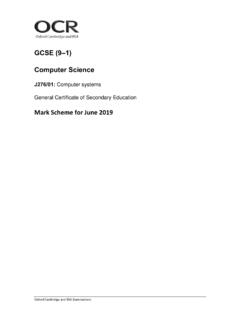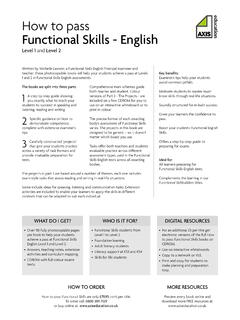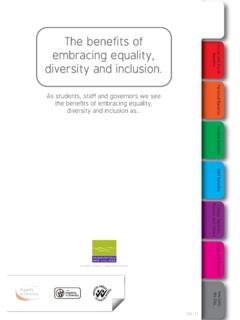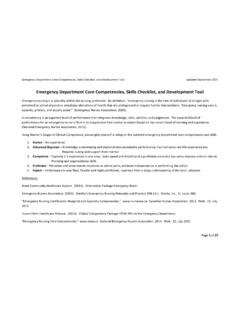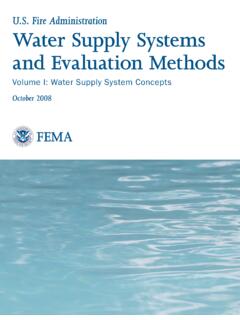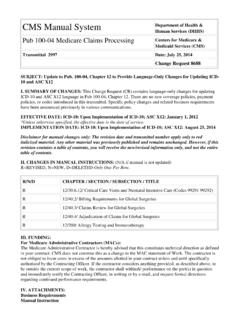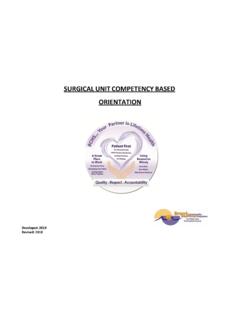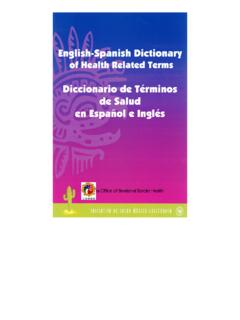Transcription of BTEC REVISION NOTES - Schudio
1 BTEC REVISION NOTES TOP TIPS EXPLAIN GIVE A REASON FOR SOMETHING DISCUSS WRITE ABOUT SOMETHING FROM DIFFERENT POINTS OF VIEW LIKE WRITING ABOUT THE ADVANTAGES AND DISADVANTAGES NAME/GIVE GIVE A SHORT ANSWER DESCRIBE WRITE ABOUT WHAT SOMETHING IS LIKE CALCULATE YOU WILL NEED TO DO SOME MATHS TO WORK OUT YOUR ANSWER AND SHOW HOW YOU DID IT INTERPRET YOU NEED TO USE THE INFORMATION GIVEN TO WORK OUT THE ANSWER PHYSICAL FITNESS Cardiovascular ( circulatory ) system move blood around the body and is made up of 1. Blood vessels 2. The heard 3. Blood Respiratory system moves air into and out of the body. It is made of 1. The lungs 2. The airways The two systems together make up the The Cardiorespiratory system The oxygen we breathe and the nutrients we eat are transported around the body in the blood.
2 Our cells used them to make energy. The cardiorespiratory system also allows the body to breath out waste products like carbon dioxide. PHYSICAL FITNESS AEROBIC ENDURANCE The ability of the cardiorespiratory system to work efficiently, supplying nutrients and oxygen to working muscles during sustained (long lasting) physical activity. MUSCULAR ENDURANCE The ability of the muscular system to work efficiently and continue to contract over a period of time against a light to moderate load. a tennis player holding their racket and playing throughout the game. MUSCULAR STRENGTH The maximum force (strength) that can be generated (made) by a muscle or muscle group.
3 FLEXIBILITY Being able to move a joint fluidly (smoothly) through its complete (whole) range of movement SPEED Speed (m/s) = distance (m) Time (s) There are three types of speed 1. Accelerative speed sprints up to 30 m 2. Pure speed- sprints up to 60 m 3. Speed endurance- sprints with a short recovery period (rest) in between BODY COMPOSITION The relative ratio (amount) of fat mass to fat-free mass in the body SKILL RELATED FITNESS BALANCE The ability to maintain centre of mass over a base of support 1. Static Balance a still balance like a hand stand 2. Dynamic Balance a moving balance like a cartwheel POWER The product (result) of speed x strength you need power to drive the ball in golf AGILITY The ability of a sports performer to quickly and precisely (exactly) move or change direction without losing balance or time COORDINATION - The smooth flow of movement needed to perform a motor task efficiently (wasting as little energy as possible) and accurately (without going wrong) REACTION TIME The time that it takes for a sports performer to respond to a stimulus and initiate (start) their response.
4 Each sport needs different types of physical and skill-related fitness. You need to be able to identify the types of fitness needed for different sports. To do this, think about what the sports performers need to do in that sport. TRAINING PROGRAM MES AND PRINCIPLES TRAINING PROGRAM ME a programme of exercise designed to improve performance. There are four basic principles (guidelines) that a coach can follow Frequency How often to train per week Intensity How hard to train Time How long to train Type What training method (way of exercising) should be used to improve the type of fitness needed for the sport. There are also seven more principles of training that a coach needs to think about SPECIFICITY Training should be linked to the sport, activity or physical/skill-related fitness goal INDIVIDUAL DIFFERENCES/NEEDS The programme should be designed to meet individual training goals and needs a fitter person would have a harder training programme VARIATION It is important to do different activities in training to the performer doesn t get bored REST AND RECOVERY -A sports performer needs to rest to allow their body to recover.
5 During recovery the body repairs any damage caused by exercise PROGRESSIVE OVERLOAD - In order to progress (improve), training needs to be demanding enough to cause the body to adapt(change) to improve performance ADAPTATION How the body reacts to training loads by increasing its ability to cope with those loads REVERSIBILITY If training stops or the intensity of training is not sufficient (enough) to cause adaptation, training effects will be reversed. HEART RATE HEART RATE The number of times the heart beats per minute (bpm) MAXIMUM HEART RATE also called HR max HR max = 220 age (years) the maximum heart rate of a 25 year old is HR max = 220 age = 220 25 = 195 bpm HEART RATE TARGET ZONES Heart rate needs to be high enough to cause adaptation and improve fitness The target zone recommend to improve cardiorespiratory fitness is TARGET ZONE = 60%-85% of HR max (a person s maximum heart rate) WORKING OUT TARGET ZONES 1.
6 Calculate maximum heart rate (HR max) or they might give it to you HR max = 220 age (years) 2. Find upper training threshold = HR max X 3. Find lower training threshold = HR max X 4. Write down the lower heart rate followed by the higher heart rate to show the target zone 220 25 (age) = 195 bpm 195 x = = 166 bpm (upper training threshold) 195 x = 117 bpm (lower training threshold) Target zone = 117 bpm 166 bpm BORG (6-20) RATING OF PERCEIVED EXERTION SCALE or the BORG (6-20) RPE Scale 6 No exertion at all 7 Extremely light 8 9 Very light 10 11 Light 12 13 Somewhat hard 14 15 Hard 16 17 Very hard 18 19 Extremely hard 20 Maximal Exertion The numbers on the scale represent the different levels of exercise intensity.
7 The BORG (6-20) can be used to estimate a person s heart rate HR (bpm) = RPE x 10 a perform says they are working extremely hard and give a RPE scale rating of 19 their estimated heart rate is HR (bpm) = RPE X 10 = 19 X 10 = 190 bpm (beats per minute) You can also estimate a RPE scale/Borg scale rating from a heart rate (bpm) a performers heart rate is 154 (bpm) RPE scale = HR (bpm) 10 = 154 10 = =15 RPE Scale BTEC REVISION NOTES TRAINING AND SAFETY Fitness training methods are different ways of exercising. Each training method improves a different type of physical or skill-related fitness. Advantages and Disadvantages Each fitness training method has advantages and disadvantages like VARIETY is the training method interesting enough?
8 INTENSITY is it easy to vary the intensity? PURPOSE does the training method improve the type of fitness you want it to? COST Does the training method needs lots of expensive equipment? SPORT SPECIFIC can the training method be changed to suit different sports? SAFETY Can the training method cause injury. an advantage of stretching is that it increase flexibility. A disadvantage of stretching is that it can cause muscle soreness. SAFETY Use equipment safely Use training methods in the right way Warm-up = (gentle exercise + stretching) to increase heart rate and help prevent injury and cool down = (gentle exercise + stretching) to decrease heart rate and stop muscles becomes sore.
9 FITNESS TRAINING METHODS FLEXIBILITY TRAINING STRETCHING IS A FITNESS TRAINING METHOD STRETCHING IMPROVES FLEXIBILITY STATIC STRETCHING is when you stretch a muscle and hold it in one position. There are 2 types of static stretching. 1. ACTIVE This is where you use your own muscles to hold the stretch 2. PASSIVE This is where you use someone or a piece of equipment to help you hold the stretch. BALLISTIC STRETCHING Is when you make fast movements (bounces). A disadvantage of this type of stretching is have it can strain (pull) your muscles or make them sore. PROPRIOCEPTIVE NEUROMUSCULAR FACILITATION (PNF) You need a partner for PNF stretching 1.
10 The performer stretches the muscle as far as it can go. 2. A partner helps hold the muscle in that position while the performer pushes back against the partner for 6-10s. 3. The performer relaxes. 4. So the partner can push the stretch a little further. Muscles have a stretch reflex that stops them stretching too far. PNF works by stopping that reflex so the muscle can be stretched further. It improves mobility, strength and flexibility. It can help people to recover from injuries. FITNESS TRAINING METHODS STRENGTH TRAINING FREE WEIGHTS are weights that are not attached to a machine You can use free weights to improve MUSCULAR STRENGH AND MUSCULAR ENDURANCE You can target particular muscles You can injury yourself if your technique is wrong There are two types of exercise with free weights CORE EXERCISES These wort muscles that make the spine and pelvis stable ASSISTANCE EXERCISES These work muscles that are specific to a sport or exercise Always do core before assistance exercises Change between upper and lower body exercises Change between push and pull exercises Weight training is done in REPS one specific


